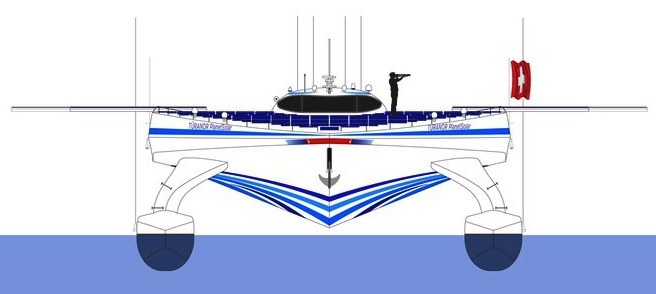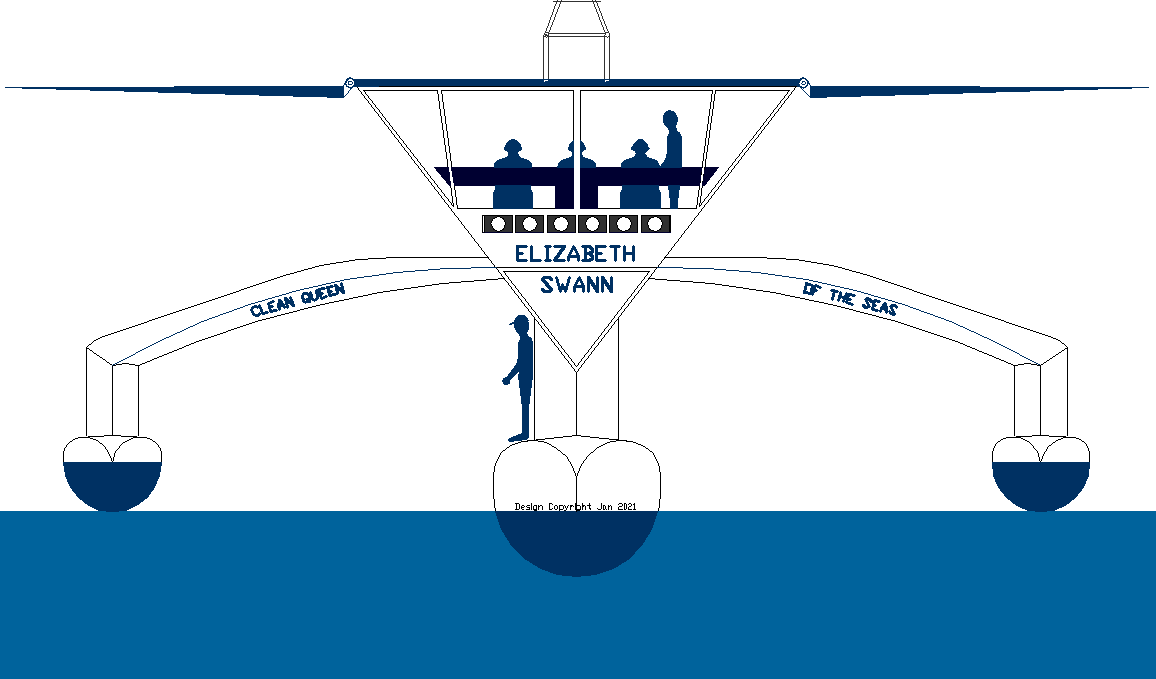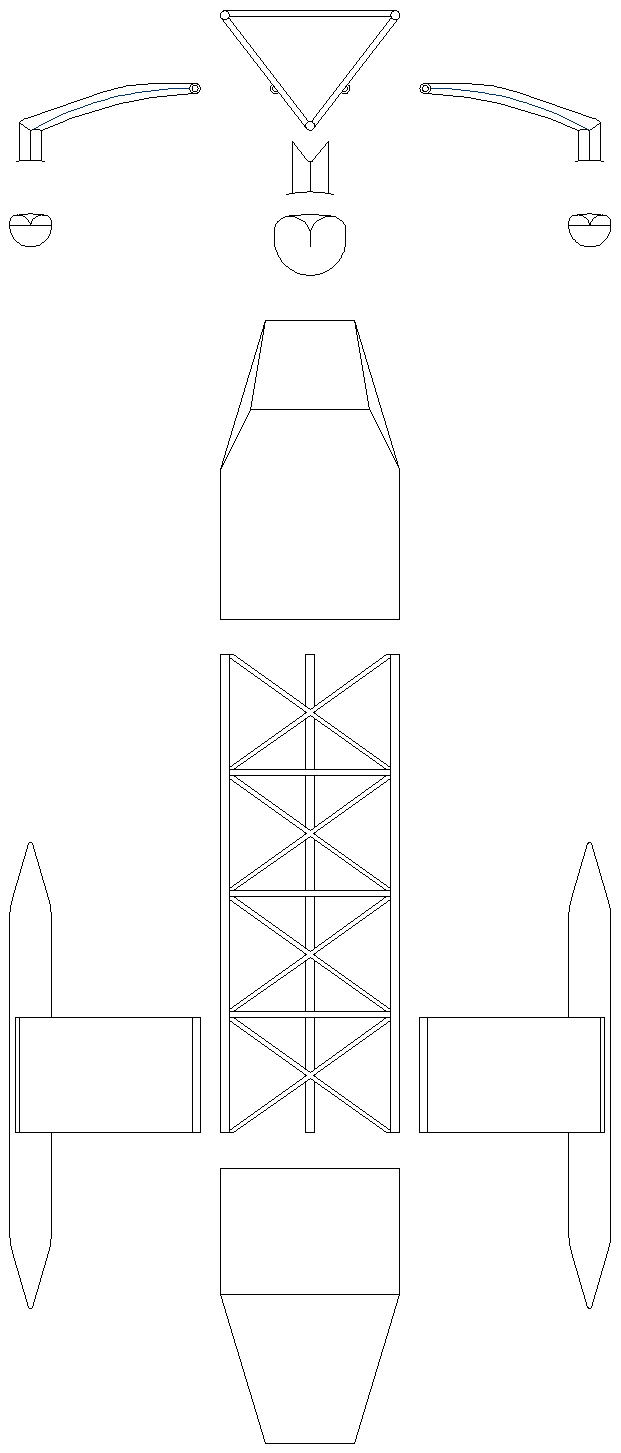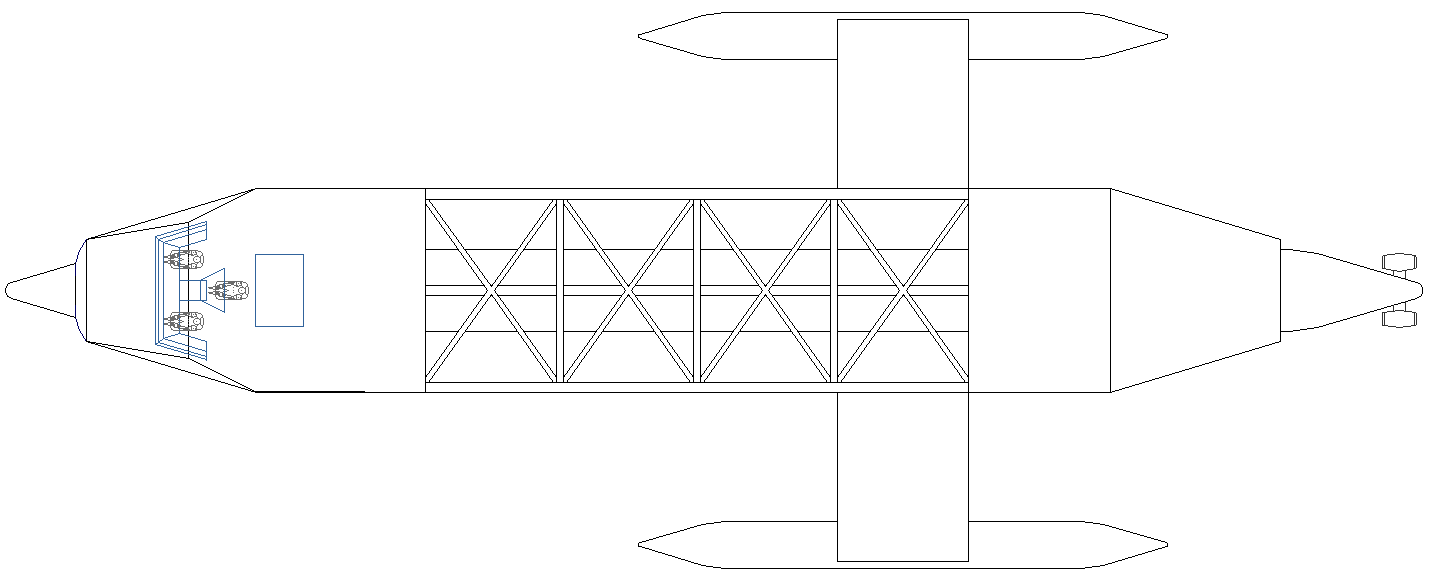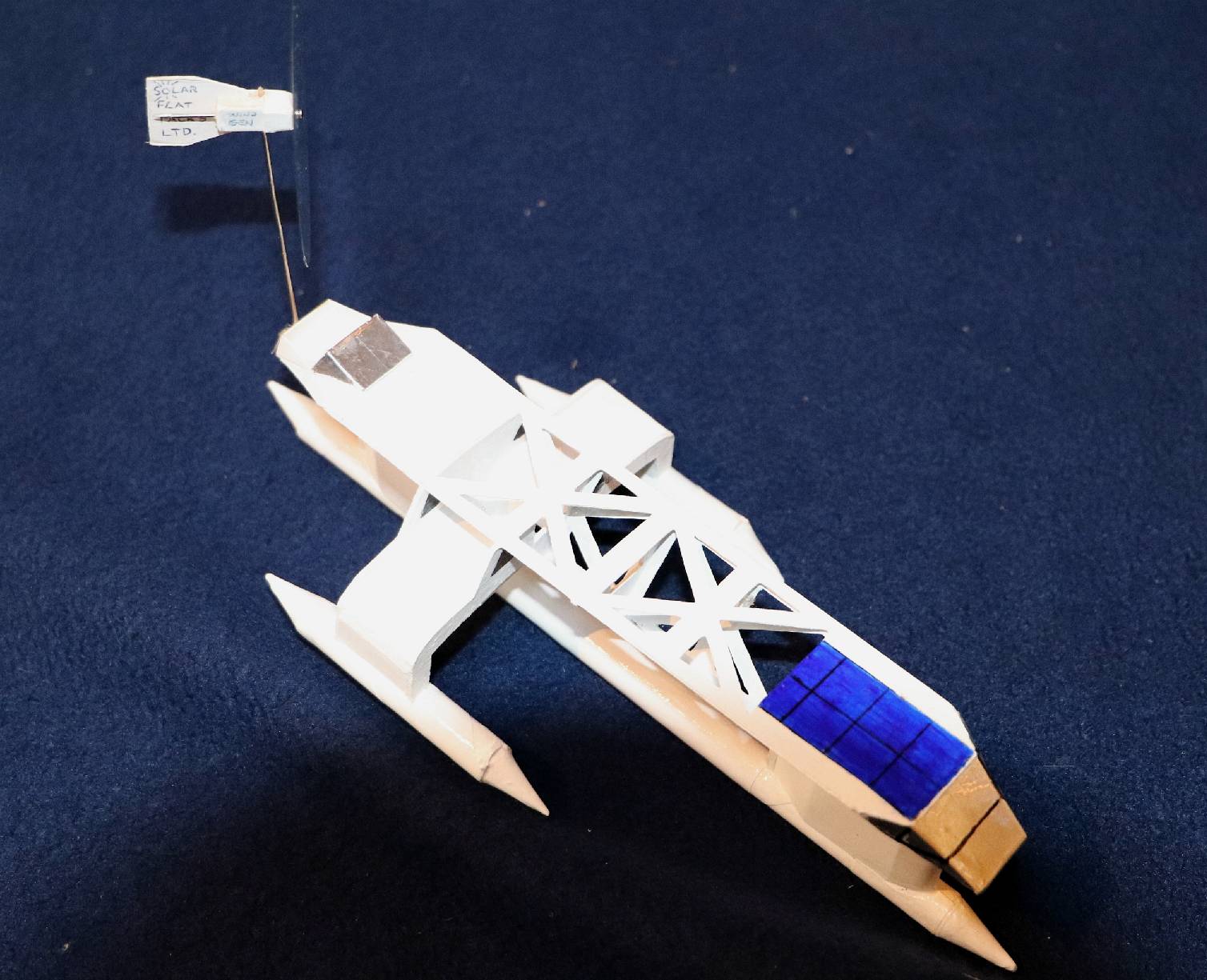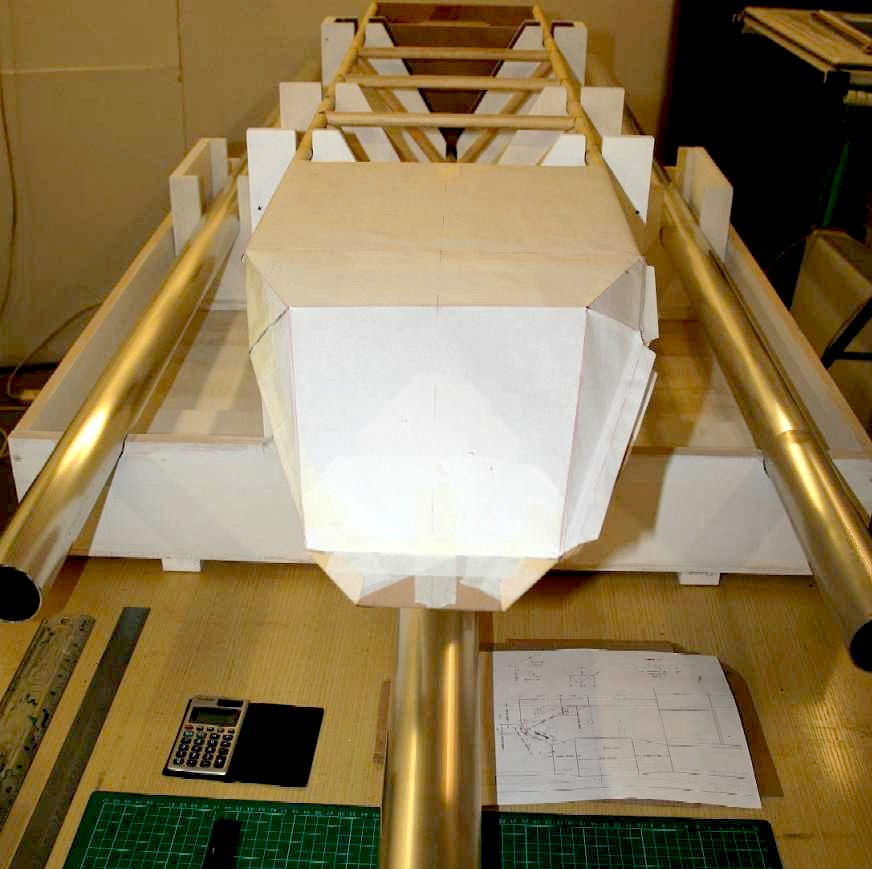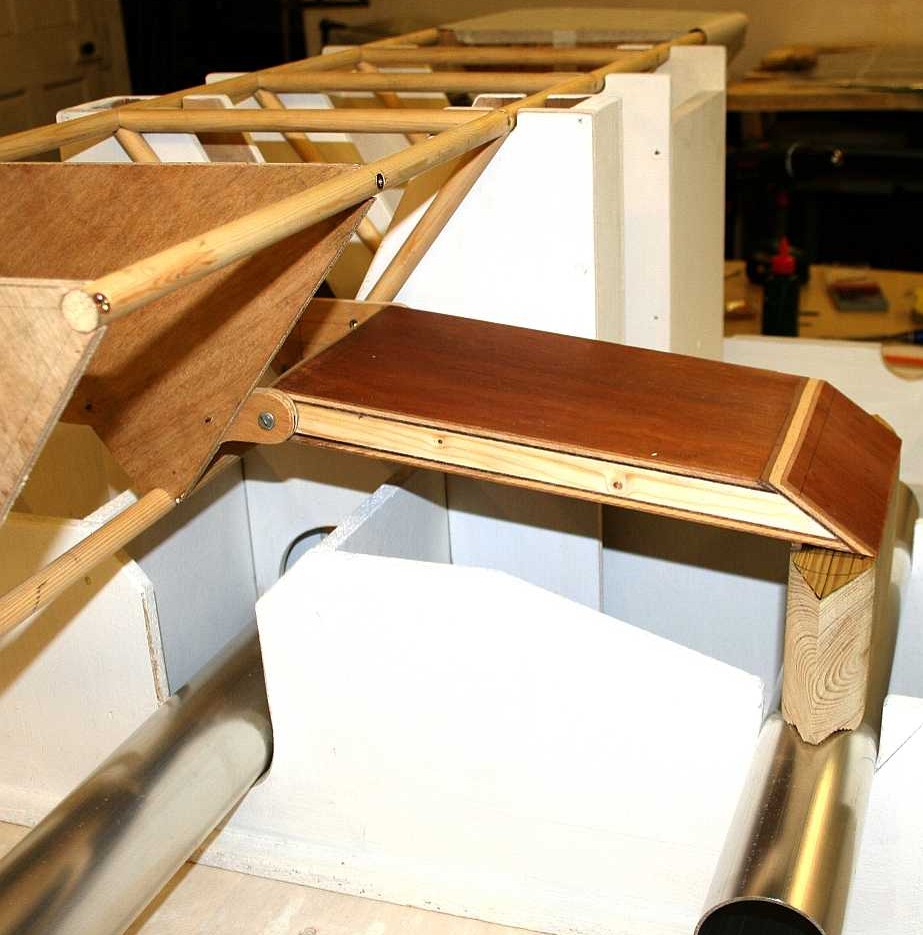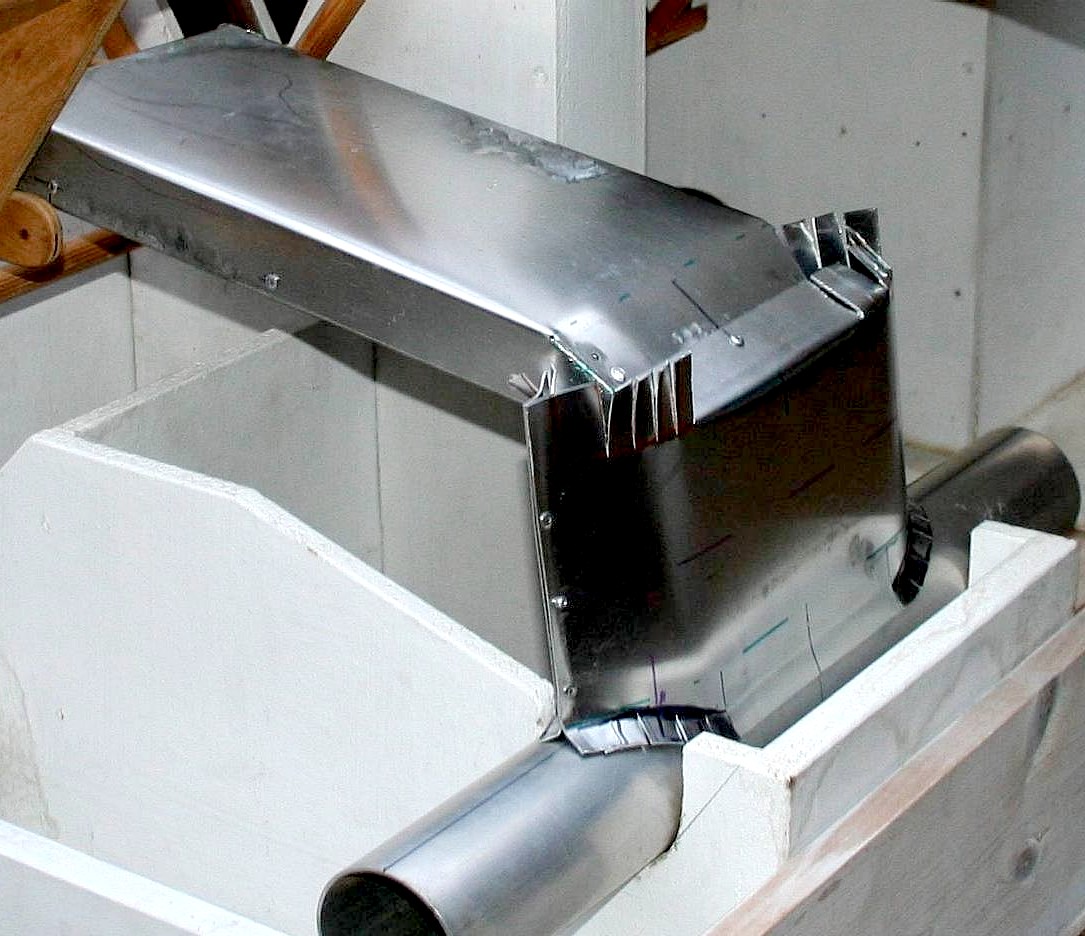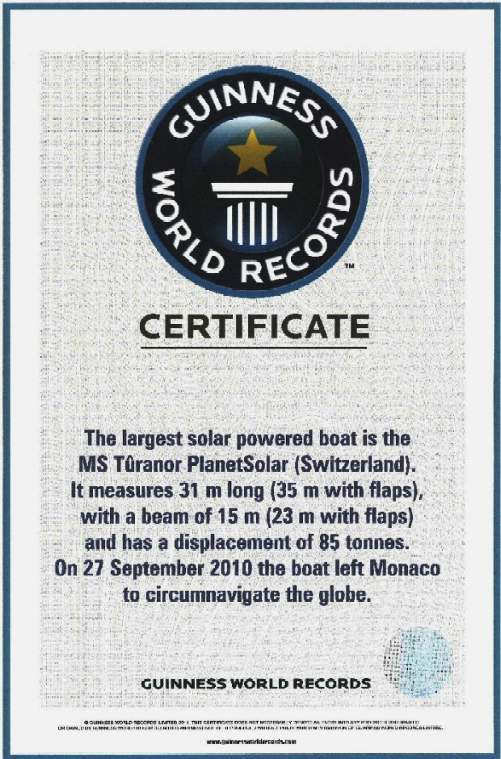|
THE CLEAN: QUEEN OF THE SEAS
Please use our A-Z INDEX to navigate this site or return HOME
|
||||||||||||||||
|
PUSHING THE BOUNDARIES OF SCIENCE - SOLAR/SAIL + HYDROGEN COMBO: It is the stated dream of policy makers: the IMO, EU and UN members, that zero emission ships might ply the waves to replace polluting diesel bunkering. In that respect the Elizabeth Swann represents a technical benchmark for fleet operators searching for solutions.
Solar power is a proven means of traversing the oceans, but slowly. We aim to improve the conversion efficiency from sun and to propulsive thrust - using a slender trimaran hull design. A rotary sail (turbine) generating auxiliary power storing it in the latest batteries, with hydrogen hybrid potential. As an experimental vessel, the design is modular, to allow bolt-on modification to the rig, to include LH2 that could take us around the world in 80 days. The vessel may be classified as a battery electric, and be re-classified to include fuel cells, with either a liquid or high pressure hydrogen installation, as cartridges (modules). We will include the options in the hull design, anticipating that LH2 will be of interest to our partners, as it increases range and performance significantly.
We aim to build a visually stunning vessel that is capable of demonstrating ocean clean tech and set a few records into the bargain - to prove the point. The Elizabeth Swann is shown here with a wave piercing hull. She is of trimaran configuration, 44 meters long with active outrigger hulls (or sponsons) that allow the vessel to trim for very efficient running - the first in the world with that feature. She has solar wings that fold for storms and track the sun, and the wind turbine, HAWT or VAWT, can be raised on a mast and furled in high winds, all robotically controlled using hydraulics from Flowfit. This forms a genuine dual-energy harvesting system ideal for workboats and coastal ferries. The Swann features the very latest 'Deep Speed' electric jet drives from 'Sealence' in Italy, and SuperVawt turbine, to show just how silent solar powered yachting can be. We are in the process of sourcing solar panels and lithium batteries.
|
||||||||||||||||
[LEFT] The current record holder, 'MS Tūranor Planet Solar' is a heavy catamaran weighing in at 85 tonnes. PlanetSolar has four motors, two for cruising (7.5 knots) and 2 x 60kW units to give a top speed of 14 knots (26 km/h; 16 mph). PlanetSolar has a 31 meter hull, 35 meters with the rear solar flap extended. Her Beam is 15 m (23 m with wings extended) The side wings on PlanetSolar were pulled out on rollers manually, using sailing winches.
[RIGHT] In this CAD drawing we see the Swann's superstructure with massive wave clearance, compared to PlanetSolar. The simple cylindrical hull design may be revised to further reduce air and water drag - and allow the crew to walk topsides, so long as the shape in contact with the water is circular to present the least wetted area. The outrigger sponsons are ride height adjustable with a proprietary drag reducing system (not shown).
|
||||||||||||||||
|
The 'Elizabeth Swann' is an in-progress design study, under development, in the hope of defining a technical/cost compromise that will allow the vessel to beat the present water speed record for solar powered vessels affordably, and set hydrogen (hybrid) benchmark records. For this we need minimum frontal areas in and out of the water, and superior hydro and aerodynamics - all linked to efficient energy harvesting apparatus, and an exceptionally efficient all electric propulsion system, flowed into our wave piercing hull.
The Queen of the Seas, might also become the 'Queen of the Nile' as a valuable boost to the zero emission travel economy and orange growth. Cultural events that are clean and non polluting.
|
||||||||||||||||
|
We are evaluating the cost and complexity of:
A single central wave piercing hull stabilized by outriggers as a trimaran.
a) Ultra light superstructure purposed designed to harvest energy from nature via b) and c) below,
b) Solar wings that track the sun and fold for storms, in concert with
c) A turbine generator on a mast that tracks wind conditions and furls for storms.
d) High pressure hydrogen gas storage system @ 125 bars to feed fuel cells as a range extender.
e) A cryogenic module to store liquid hydrogen for record range and speeds.
- Weight analysis See 2023 V2 weight analysis.
The Swann is a floating laboratory, as an experiment to either prove or disprove whether a wind turbine, allied to solar panels, can make a significant improvement in blue water performance. With Europe engaged in their Green Deal, and with the IMO seeking 40% CO2 reductions by 2030 we hope to be able to make a significant contribution to man's knowledge and mastery of the ocean one way or the other.
The 'Swann' is to include performance data logging and analytics, designed to help our designers define a formula for zero emission ships of the future. That could mean your coffee, mangos, avocados, rice and other delicacies, don't carry a climate penalty - making them taste that much better.
The Foundation is keen to build strong partnerships for this project, to include hydrodynamic development of the wave piercing hull, finite element stressing, wind turbine design and high performance solar panels, advanced hull metals and joining, batteries, communications, robotics, COLREGs compliant AI autonomous navigation, hydrogen, propulsion and hydraulics.
That said, we are making generous provision within the vessel for a crew of 6 scientists and adventurers, including a forward helm with seating for 3, a rear helm with seating for 6, a galley and mess room. Total sleeping accommodation is for six, in bunks.
The latest advances in technology demand we include partners in hydrogen production, delivery and safe storage, to include fuel cells, pressure vessels and cryogenic storage, for which IMO and other recommendations exist as guides.
This project is not suitable for public funding, where for the most part, the technology is available off the shelf. We are therefore reliant on commercial backing, the reciprocal of which is generous media coverage from events, in return for philanthropic contribution. It is a battle to cool our climate, a race against time that we hope G20 governments rise to, before it is too late: Tempus Fugit.
The Elizabeth Swann is a Climate Change Challenger, she is a leading edge design with many innovative features designed to increase our knowledge and mastery of the sea. Including, as a technological finale, a voyage around the world in 80 days - but only as bunkering for such event may be arranged.
Join us if you will for a voyage into the nautical unknown where the Queen of the Seas is a zero carbon vessel that harvests the energy it needs for transit from nature. She needs no diesel to travel from waypoint to waypoint, and no crew to hoist the mast or control the solar panels. She is also ideal for use as a hydrogen powered ferry.
That is our dream and ambition.
HULL & SUPERSTRUCTURE - The trimaran design in plan view without solar panels or wings. The hull can be built as 12 sub-assemblies. Such that the alloy fabrications can be outsourced and assembled at any suitable site for launch. The largest sub-assembly would be the central triangulated spaceframe @ 16 meters. Fore and aft cabins are 10 meters long. All suitable for delivery by road haulage.
|
||||||||||||||||
|
At the present time the Guinness Book of World Records, lists the world's largest solar powered boat as the MS Turanor PlanetSolar @ 31 meters long x 15 meters wide and 85 tonnes. The Swann will then set a new world record @ 44 meters x 16.6 meters beam. We look forward to the day that we receive a similar Certificate - raising the record - and we can, but only with your help. This record is over 10 years old.
|
||||||||||||||||
|
DRAFT SPECIFICATIONS
Material: 5083 marine alloy (substantially) Hull length:
44 meters (nominal) Energy storage: Battery + H2 & LH2 (options) [h2] 866.25kg (29,106kWh) [LH2] 4,005kg 135,000kWh Crew: sleeps four in rear cabins. Navigation: COLREGS compliant autonomy when 'Captain Nemo' autopilot engaged AI: Onboard geospatial data harvesting 'Hal' system
|
||||||||||||||||
|
Please use our A-Z INDEX to navigate this site or return HOME
This website is Copyright © 2024 Jameson Hunter Ltd
|
